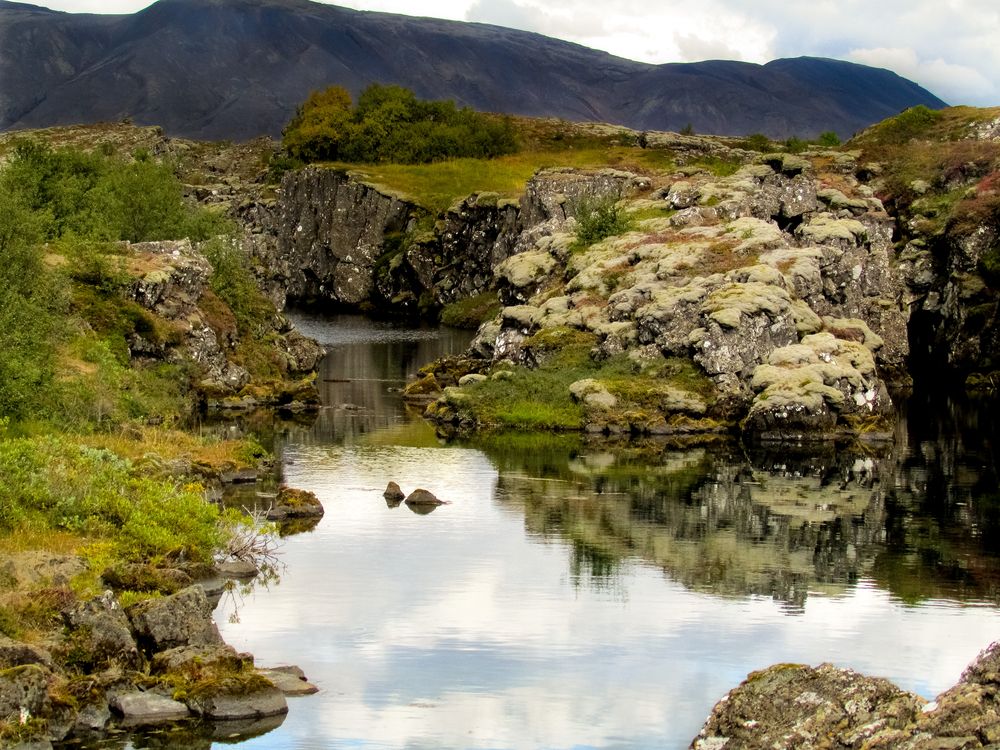When I first started playing around with a camera, I didn’t think that I needed to do any post-processing to my photos. I was under the impression that in order to take a good photo, it had to be perfect, right from the camera.
However, I was told by other photographers I know that I should get into post-processing, and decided to follow their advice. Now, I don’t think I’ll ever go back.
1. Turn the Good-to-Average Shots in your Library into Great
When I first started playing around in Lightroom, I was a little intimidated by the prospect of editing some of the photos I viewed as “weaker” - I wasn’t sure if I could really do much to improve what I thought was just an “average” picture.
The picture above was only taken with a simple point-and-shoot camera. While it was no DSLR, it did a decent enough job - though sadly, it often leaves most of the pictures it takes rather cold and washed out, like this one.
The colours are dull; the horizon line is tilted; the entire thing feels rather flat and lifeless. Even looking back, the resulting image was nowhere near what I remembered seeing when I decided to snap the photo.

Then, the same picture, after some editing using the basic tools available in Lightroom.
Wow.
Even while editing, I had lost track of the look of the original in my mind. I was getting concerned that the edits were too much, until I decided to do a before-and-after comparison of the picture:
After doing that, I essentially lost all doubts that my editing was on the wrong track. The blah, average-to-okay picture had suddenly turned into something great, just because I had decided to do some post-processing.
2. Get a Better System of Organization for Your Photo Library
Before I got into working with Lightroom, my photos were mostly just living on my camera’s SD card, occasionally finding themselves copied off into a random slew of folders organized by subject matter - a system that eventually fell apart for pictures that toed the line between one folder name and another.
Cue all of the organization systems in Lightroom.
Collections, keywords, individual photo ratings and more - any way that you can think of to organize your photos probably already exists in Lightroom’s Library module.
My photos are now more organized that they’ve ever been. While organized into folders by capture date on my hard drive, in Lightroom itself, I can find photos based on the numerous Collections I’ve created. It’s quicker and easier to go “Where did that one photo of that one flower end up?” in Lightroom than it is trying to comb through a mess of folders.
Collections are also incredibly easy to set up:
- After opening Lightroom, click the Library module.
- In the left-hand Navigator pane, locate the Collections tab.
- Click New Collection (+), then click Create Collection.
- In the Name field, enter the name for your new Collection.
- (Optional) To create your new Collection inside an existing Collection Set in your catalog, under Location, click the Inside a Collection Set option.
-
(Optional) Under Options, specify any additional options for your new Collection:
a. To include any photos you currently have selected from your catalog in your new Collection, click the Include Selected Photos option.
To include those photos as Lightroom copies of the original photos, click the Make Virtual Copies option.
b. To set your new Collection as the Target Collection for quickly adding photos when browsing your catalog, click the Set as Target Collection option.
7. To finish creating your new Collection, click Create.
Done! You easily have a new Collection available for grouping together similar photos in Lightroom. Time for a better way to handle photo organization.
3. Add Copyright and Other Metadata Information into Your Photos
While not as much of a concern for someone just starting out with photography, it is a point to consider - you can add information into the basic metadata of your image files to help combat theft.
Hard for someone to claim that they didn’t steal your image when your name is embedded right into the information attached to the file, right?
There are many other reasons to get into post-processing your photos, but these are some of the main ones that I’ve personally found so far.
Do you have an opinion on post-processing? Do you have a program that you prefer over Lightroom? Leave a comment below.

